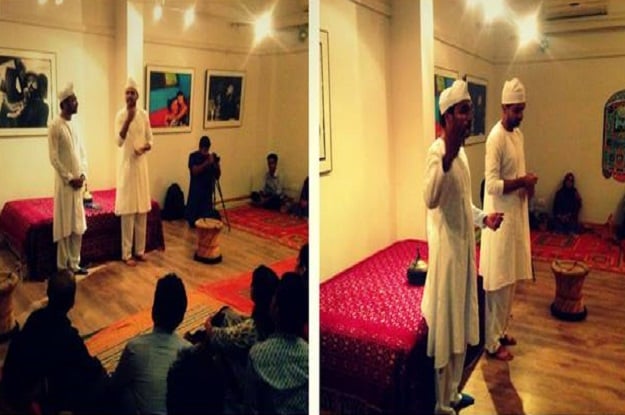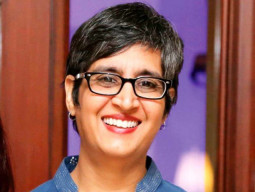
KARACHI: The art of storytelling is no new phenomenon. Well before tales were penned down and recorded, story narration was an art that was not only enjoyed but also seen as a rare talent, mastered only by a few.
The same mesmerising setting was enjoyed by spectators late Sunday evening at The Second Floor (T2F), as tales from Tilism-e-Hoshruba and Haveli from Aab-e-Gum came as a treat to the listeners. Artists Fawad Khan, Syed Meesum Naqvi and Nazrul Hassan read tales with outstanding poise, respecting both the language and the period it hails from. The audience, a mix of young and old, could relate to the narration due to the finesse of the delivery, even when the language was at times heavily embedded with Persian and Sanskrit words, and not understandable to many.
Read: Artists paint history, culture, modern life
Tilism-e-Hoshruba is a tale of multiple stories mushrooming from a single tale, the story revolves around the concepts of love, lust, war, deceit, and beguiling witches referred to as 'nazneen' every now and then. Khan and Hassan narrated the tale dressed in classic white kurta pyjamas and caps. The oratory styles often stressed phrases like 'Ankhain hui chaar, dil main aya pyaar' (love at first sight) and the expression of women's ways as 'Koi inkay haath kay ber na khaye,' (Do not trust her), making the daastan an enchanting spell of characters, although medieval, yet relatable in the modern context.
Another presentation was of Mushtaq Ahmed Yusufi's Haveli from his compilation Aab-e-Gum. It is a pre-partition narrative of a certain highly-feared figure of Kanpoor who runs a wood shop in Baans Mandi. The figure, often referred to as qibla, is an extremely angry man who does not like to be disagreed or agreed with on any matter. The tale is suggestive of people who tend to live in the past and cannot come to terms with changes in their environment. With the tale starting with "Woh hamesha se he meray kuch lagte thay"( he was always related to me somehow) and qibla's cunning ways expressed in his pride for his wood as "aisi lakri bagh-e-baheshat se tooba se bhi nahi milegi" (This form of wood cannot be obtained even from heaven's tree named Tooba) carrying the story forward, one could not help but wonder about the eclectic mix of qibla's unexpected anger at one place and his soft corner for his wife's physical ailment.
Read: ‘Our art is our blessing and our curse’
Another interesting facet of this dramatic reading session was the post-partition scenario. Qibla falls into a fight with a pathan in Karachi who threatens to kill him. This then becomes the climax of the story, as he realises that the times are not how he perceives them to be, gives up his work and returns to his home defeated. One can also see in a historical context how the seeds of conflict in Karachi, with its multitude of different ethnicities, have already been sown and await the future generation. Once again, Naqvi, Khan and Hassan left no stone turned in taking the audience to a time whose future is lived today as our present.
Published in The Express Tribune, August 4th, 2015.

























































COMMENTS
Comments are moderated and generally will be posted if they are on-topic and not abusive.
For more information, please see our Comments FAQ